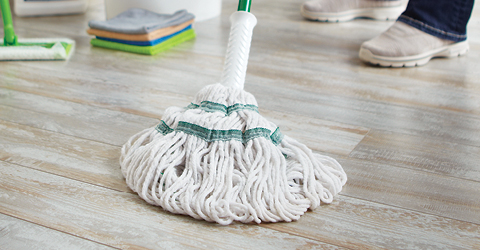Why Clean with Microfiber?

Superior Cleaning Power
Microfiber works its way into surface cracks and crevices to pick up microbes and microscopic particles cotton and other synthetic fibers leave behind, making it ideal for cleaning and disinfecting high-traffic, high-risk areas in any facility. In fact, microfiber has proven to be more than 3 times more effective at reducing bacteria than cotton fiber, removing 99% of bacteria compared to cotton’s 30%.

Reduced Labor and Supply Cost
Microfiber cloths and cleaning tools are so effective at capturing and removing bacteria that cleaning staff can clean more area in less time, helping reduce overall labor cost. In addition to being longer-lasting, cleaning with microfibers requires significantly less cleaning chemicals and water than cleaning with conventional fibers – 95% less, according to a study conducted at the UC Davis Medical Center.

Improved Infection Control
Microfiber cloths and tools remove the risk of crosscontamination when used as part of a color-coded cleaning program. For example; use Red for restroom floors or toilets, Yellow for restroom sinks or dispensers, Green for general, non-preparatory food and bar cleanup, or Blue for low-risk areas. Additional colors are available. Note: Food prep areas have their own standards through the Hazard Analysis Critical Control Point (HACCP) system.

Additional Benefits
- Virtually lint-free. Microfibers are perfect for cleaning glass, stainless steel surfaces, specialty equipment, vehicles, and other surfaces that attract dust and lint.
- Less risk of staff injury. Microfiber's drastic reduction of cleaning solution lessens the weight of cleaning carts and buckets custodians must transport when cleaning a facility, minimizing the risk of stress-related injuries.
- Can be machine-washed 500 times or more. NOTE: Always launder microfiber products separately from other types of fibers, and only with detergent free of bleach and fabric softener.



